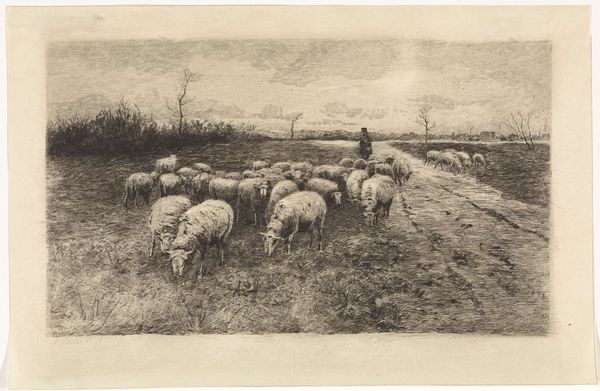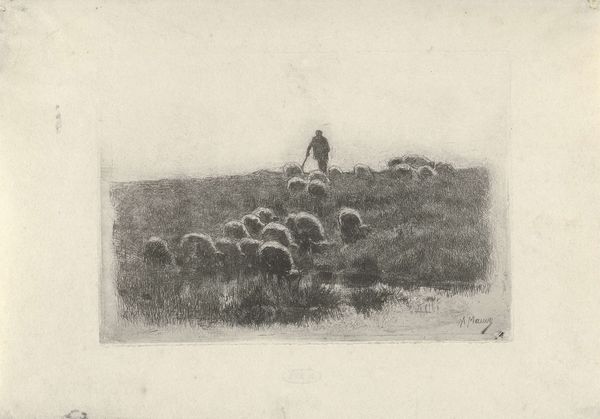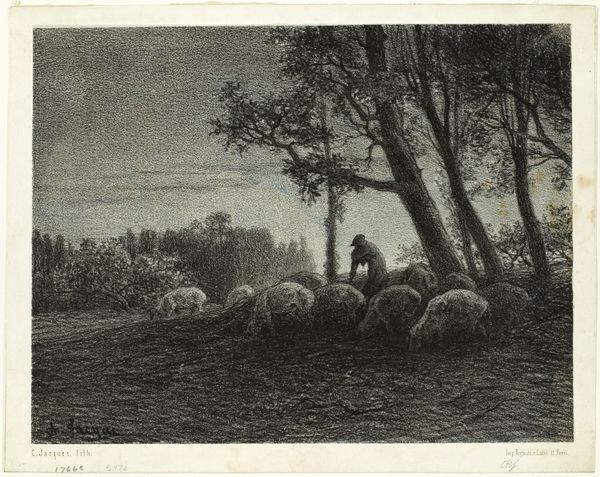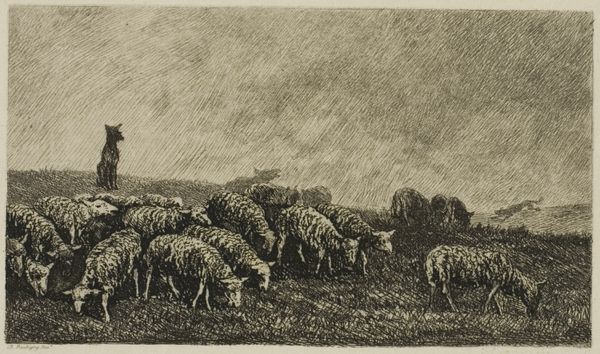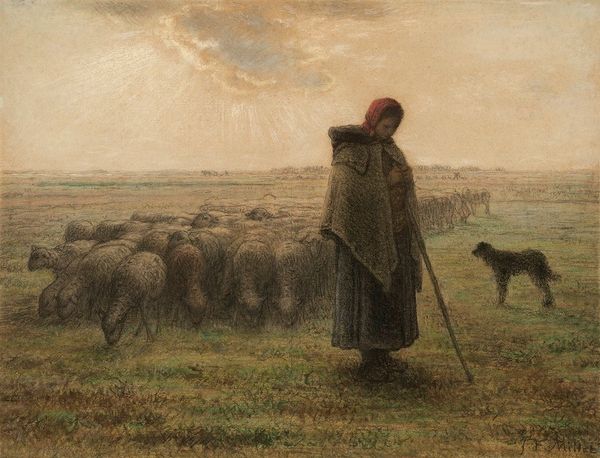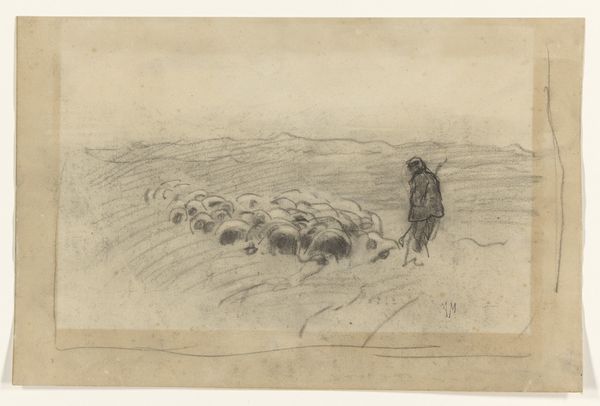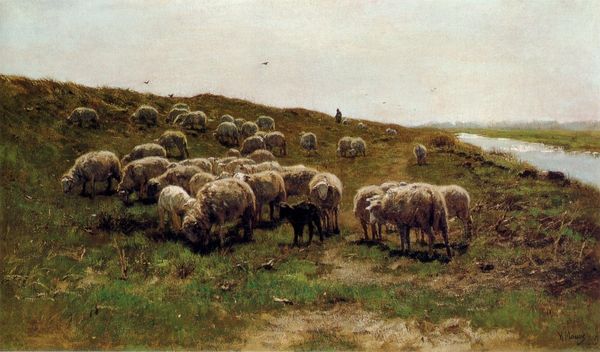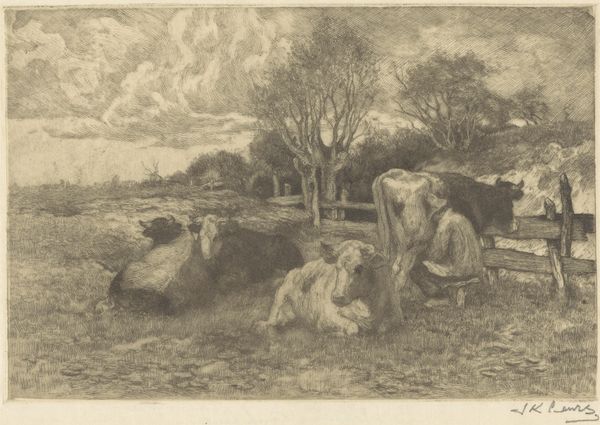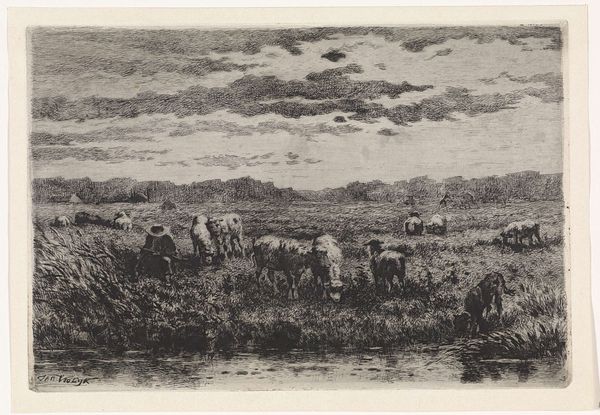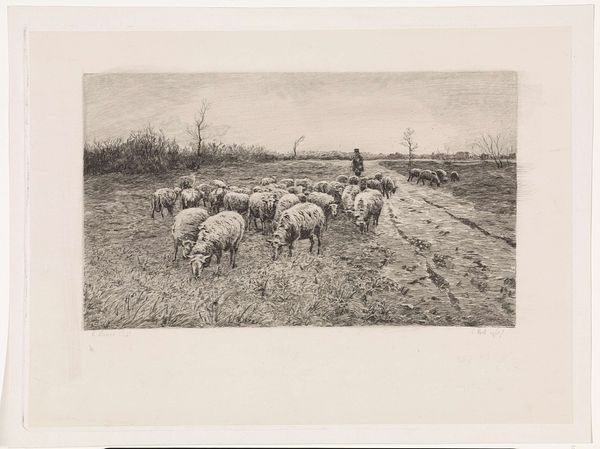
drawing, print, graphite
#
drawing
# print
#
impressionism
#
landscape
#
charcoal drawing
#
pencil drawing
#
graphite
#
genre-painting
#
realism
Dimensions: height 132 mm, width 191 mm
Copyright: Rijks Museum: Open Domain
Curator: This is "Herder met kudde schapen," or "Shepherd with a Flock of Sheep" by Anton Mauve, made sometime between 1848 and 1888. It's currently held here at the Rijksmuseum. Editor: There’s such a quiet stillness to this piece. The somber gray tones create an introspective mood, a feeling of isolation. The flock are rounded smudges, their identities absorbed by their group. Curator: It’s fascinating how Mauve captured the genre scene, really focusing on the rural life. What’s also remarkable to consider is the materiality. This piece is a drawing, printed and made using graphite. Editor: The physical act of mark-making is evident, layering graphite to build tonal depth, mass and movement. Look at the way he has delineated the textures of fleece, rough grasses, the form of the shepherd's body, all using a readily available material and transferring it through printing. One thinks of the availability of labor here as well in relation to materials and consumption. Curator: The single figure of the shepherd, so small on the horizon line, seems to be guiding not only the sheep but our eye as viewers, toward a deeper reflection. Shepherds have long been used in visual symbolism, and of course also evoke Christian symbolism, leadership, protection, but also of solitude. Editor: You mention solitude, and the composition echoes that. There’s a sparseness to the landscape, a large sky and compressed earth, emphasizing that sense of a lone figure navigating a liminal space. It speaks to the universal experience of navigating a place within society. Curator: Exactly. And I’m left wondering if, even in a drawing like this one created with accessible materials, and mass reproducible through printmaking, Mauve wasn’t interested in elevating the everyday—imbueing his subjects with the symbolic weight of much older pastoral traditions, while responding to modern conditions. Editor: So well put. Looking at how the material realities enhance the narrative’s solemn beauty, the production becomes integral to interpreting the image's melancholic and meditative spirit.
Comments
No comments
Be the first to comment and join the conversation on the ultimate creative platform.
